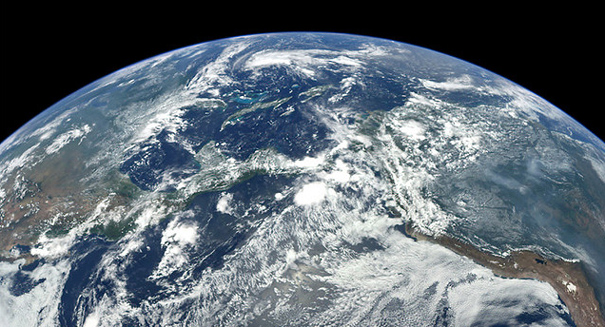
The long ascent itself would be a 1.5 hour trip, followed by two hours spent gazing down at the planet below.
You’ve never seen a hot air balloon like this one before. According to an article published by the Washington Post, a start-up company based in Tuscon, Arizona is blending the tourist attraction industries of hot air ballooning, skydiving, and commercial space travel all into one. The result of the equation, a helium balloon that takes customers up to elevations of nearly 100,000 feet, could be the next big thing in luxury vacations.
By itself, the 100,000 feet figure is impressive, if only because it’s nearly 10 times higher than the average balloon flight. (Most hot air balloon companies top out at 3,000 feet and can give customers comfortable and thrilling experiences at 1,200 feet or higher). Since 100,000 feet is also on the edge of space, it makes the adventure offered by this particular Tuscon start-up – called “World View Enterprises” – a unique and thoroughly exhilarating ride.
Of course, “unique” and “thoroughly exhilarating” come with a price. A ride in a World View balloon costs $75,000 per person. The balloon goes up with a pressurized capsule and eight people aboard (the open-air, private flight experience of traditional hot air balloon rides is understandably impossible in this case), and would last approximately four hours.
The long ascent itself would be a 1.5 hour trip, followed by two hours spent gazing down at the planet below. World View representatives have cited their balloon rides as unique because they would allow for clients to see the full swath of the Earth’s curve, as well as the blackness of space surrounding them.
Once customers complete their near-space sightseeing, the balloon and the capsule would disengage and the capsule would begin a virtual “free-fall” toward Earth – not unlike skydiving or a high-octane theme park. Of course, the capsule wouldn’t be falling unaided by any landing method. Barring some serious accident, a parachute apparatus would deploy above the capsule that would help to slow down the descent as the air thickened nearer to the surface. Eventually, the fall would turn into a steady glide, leading to a safe and secure landing, and signifying the end of the journey.
Currently, World View Enterprises is hoping to begin offering tourist balloon flights in about three years. In the meantime, the company has a lot of guidelines to deal with, especially after the Federal Aviation Administration announced that it would consider World View’s balloon capsules as “space vehicles.”
While few would argue that an elevation of 100,000 feet – or about 19 miles – would constitute “outer space” travel, World View capsules would also have a potential for higher altitudes better suited for scientific research.
Leave a Reply